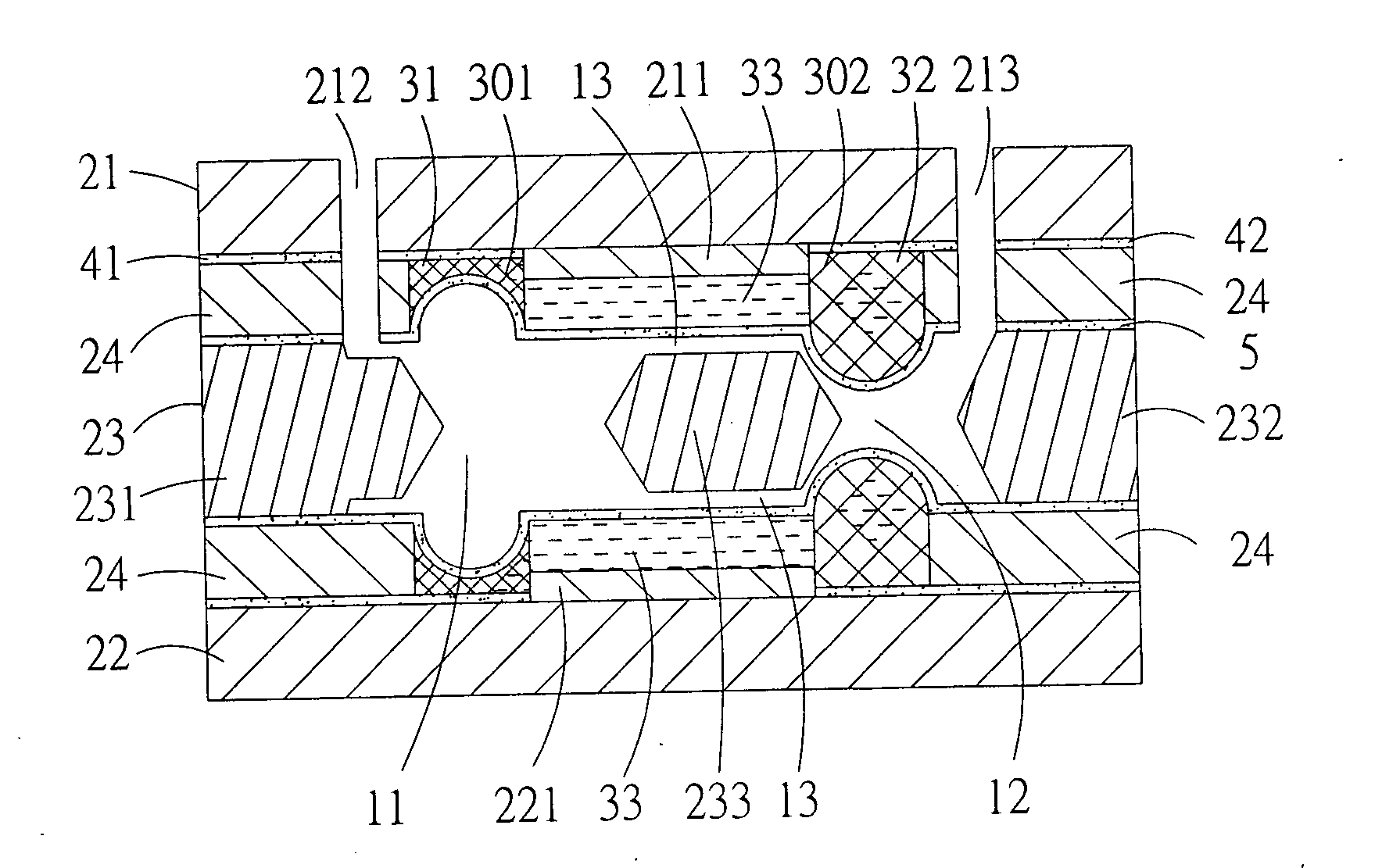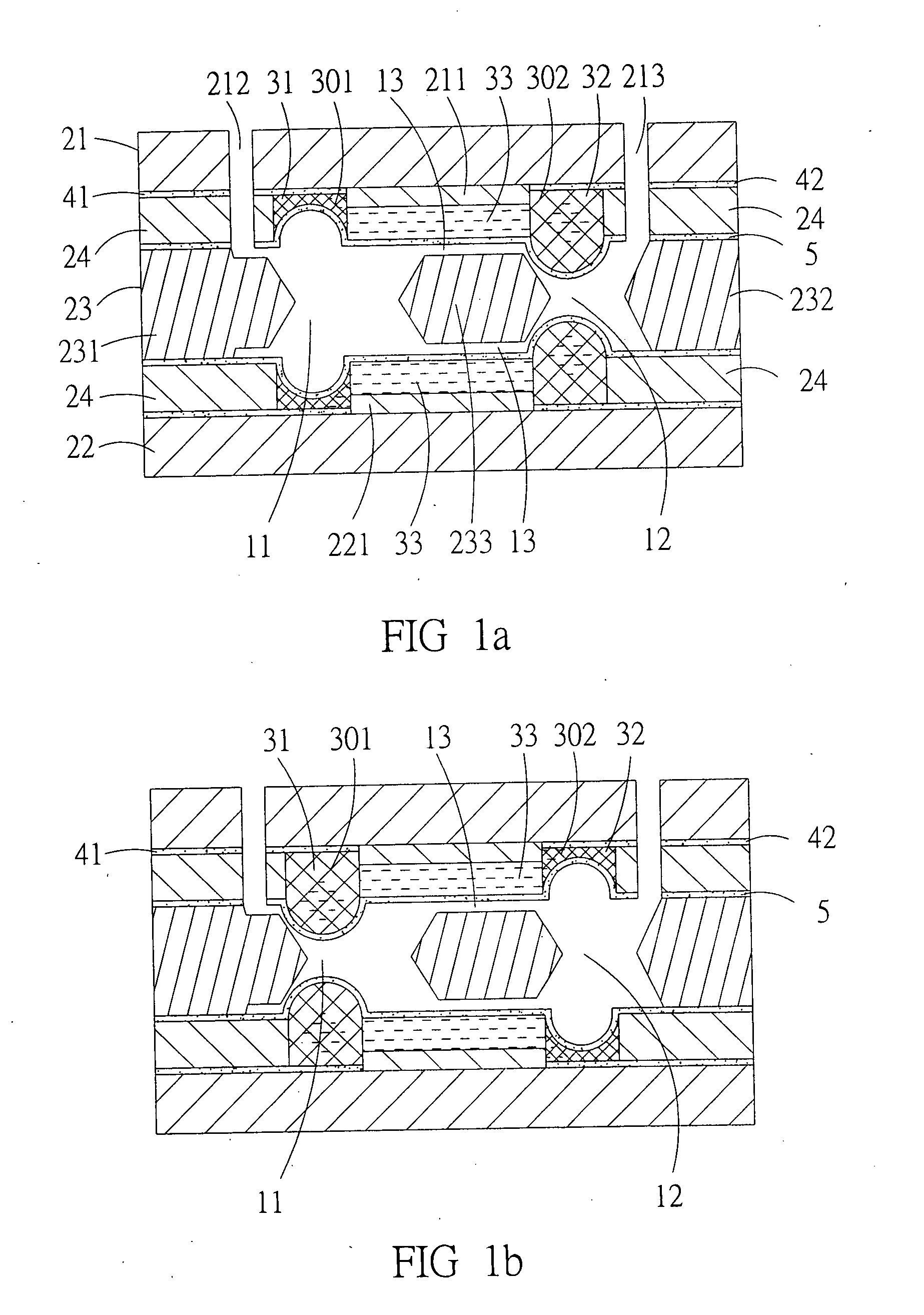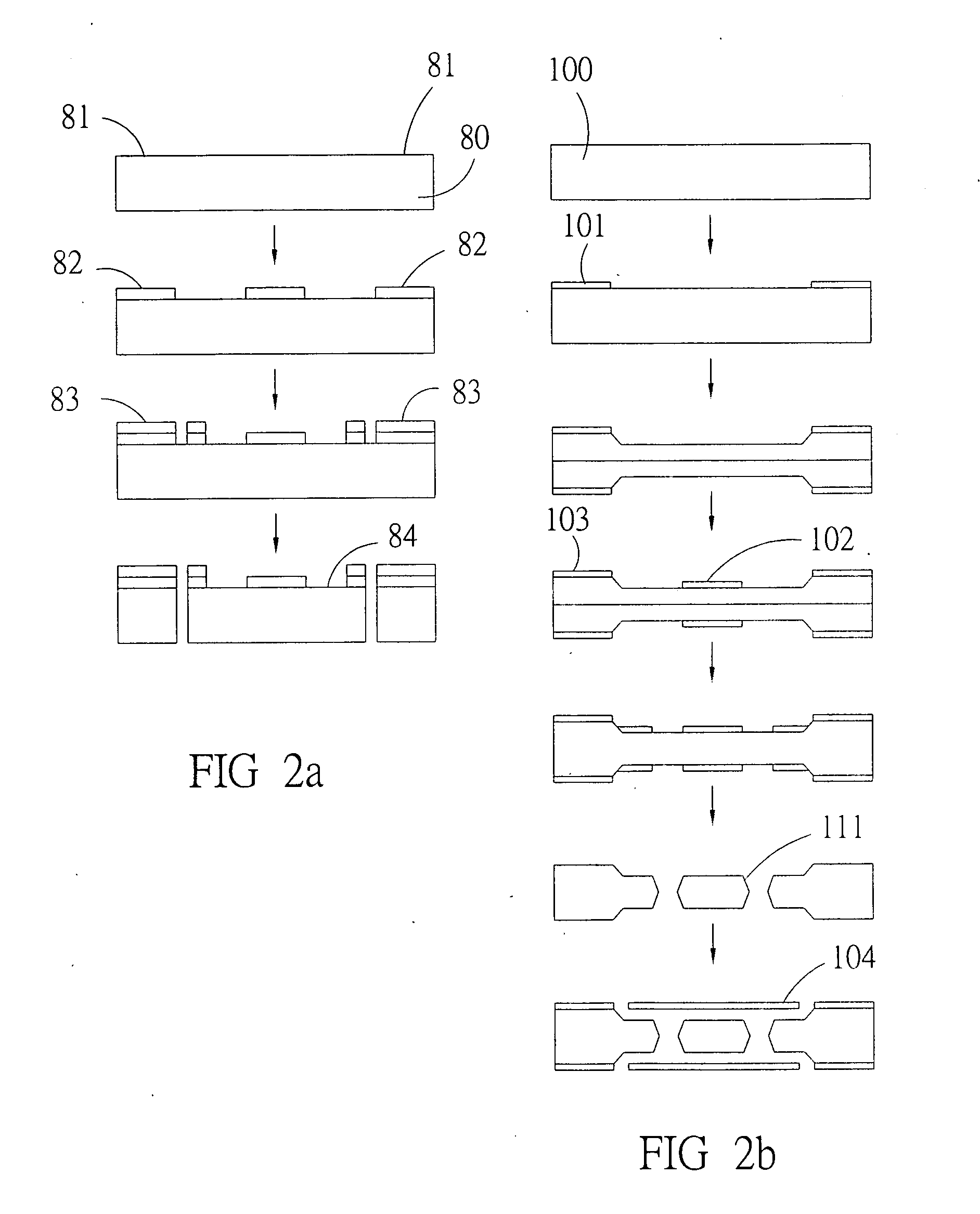Hydrogel-driven micropump
a technology of micro-pump and hydrogel, which is applied in the direction of positive displacement liquid engine, separation process, instruments, etc., can solve the problems of limited application and difficult implementation of control and detection applications, and achieve the effects of low voltage, low power consumption and easy combination with any devi
- Summary
- Abstract
- Description
- Claims
- Application Information
AI Technical Summary
Benefits of technology
Problems solved by technology
Method used
Image
Examples
Embodiment Construction
[0019] Hydrogel is a polymeric material having a fine net-like structure and being able quickly to absorb a quantity of liquid of dozens of the original mass. Having absorbed water, hydrogel expands, and after having released water, hydrogel shrinks. Therefore, by varying the quantity of absorbed water, the volume of a piece of hydrogel is changeable. Hydrogel is made of polyacrylamide-co-acrylic acid. Absorption of water until saturation and subsequent volume change happen very fast. The fastest rate is absorption of a 70-fold mass of water within one minute, accompanied by a volume increase of 100% per second.
[0020] Electrophorese usually needs application of several hundred volts for allowing ions to separate by a sufficient distance between electric terminals. For example, for separating hemo-proteins, a distance of several centimeters to several tens of centimeters is required.
[0021] When electrophorese is performed, positive ions are by an applied electric field moved toward...
PUM
| Property | Measurement | Unit |
|---|---|---|
| applied voltage | aaaaa | aaaaa |
| voltage | aaaaa | aaaaa |
| flow rate | aaaaa | aaaaa |
Abstract
Description
Claims
Application Information
 Login to View More
Login to View More - R&D
- Intellectual Property
- Life Sciences
- Materials
- Tech Scout
- Unparalleled Data Quality
- Higher Quality Content
- 60% Fewer Hallucinations
Browse by: Latest US Patents, China's latest patents, Technical Efficacy Thesaurus, Application Domain, Technology Topic, Popular Technical Reports.
© 2025 PatSnap. All rights reserved.Legal|Privacy policy|Modern Slavery Act Transparency Statement|Sitemap|About US| Contact US: help@patsnap.com



